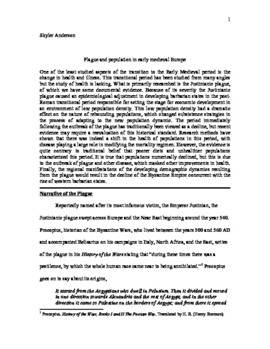| dc.contributor.author | Anderson, Skyler | en_US |
| dc.contributor.editor | Scheller, Austin | en_US |
| dc.contributor.editor | Ross, Madeline | en_US |
| dc.contributor.editor | Tenney, Lena | en_US |
| dc.contributor.editor | Renner, Scott | en_US |
| dc.contributor.editor | Conklin, Madison | en_US |
| dc.contributor.editor | Long, Madison | en_US |
| dc.contributor.editor | Moore, Nathan | en_US |
| dc.date.accessioned | 2016-11-15T21:51:11Z | |
| dc.date.accessioned | 2021-04-14T15:12:37Z | |
| dc.date.available | 2016-11-15T21:51:11Z | |
| dc.date.available | 2021-04-14T15:12:37Z | |
| dc.date.issued | 2013-10-01 | en_US |
| dc.identifier.uri | https://hdl.handle.net/11244.46/1191 | |
| dc.description | Runner-up for the Griswold Prize for Excellence in Undergraduate Historical Scholarship | en_US |
| dc.description.abstract | This meticulous and compelling paper shows that late antiquity and the incipient dark ages glimmered with more prosperity than most scholars have realized. Even as plague decimated the Mediterranean world, certain areas and peoples were better able to weather the onlsaught than others were, and thus drew strength from the weakness of their neighbors. Artfully weaving together textual sources with advanced scholarship and research on the physical health of the diverse societies of Justinian’s world, Anderson brings this complicated age into sharp focus. Like the best historians, Anderson reconciles a sharply articulated new argument with sensitivity to the complexities of the past. –Raphael Folsom | en_US |
| dc.description.uri | http://history.ou.edu/journal-2013 | en_US |
| dc.relation.ispartofseries | OU historical journal ; 2 (Fall 2013) | en_US |
| dc.title | Plague and Population in Early Medieval Europe | en_US |
| dc.contributor.sponsor | Folsom, Raphael | en_US |
| dc.contributor.sponsor | Holguín, Sandie | en_US |
| dc.contributor.sponsor | Levenson, Alan | en_US |
| dc.description.undergraduate | undergraduate | |
